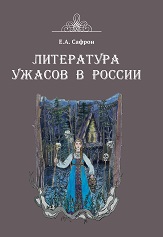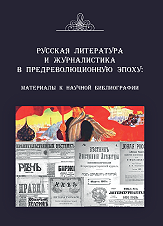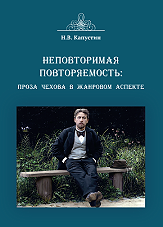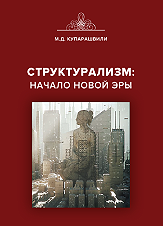Maindurova Rashidat M.,
Candidate of Philology, Researcher
G. Tsadasa Institute of Language, Literature and Art
Dagestan Federal Research Center of the Russian Academy of Sciences
e-mail: mrashidat@dk.ru
This article reveals the characteristic features of one of the varieties of unpretentious prose of the Avars — historical traditions, analyzes the genre-forming signs of oral folk stories about real historical events. The idea is justified that, despite the presence of elements of exaggeration, embellishment, basically, they are dominated by the attitude towards reliability. Traditions are prose works that have survived directly from the depths of centuries and therefore preserve the spirit of that time. Traditions are characterized by retrospection. Traditions as a genre of oral folk art — epic narratives about events and people of a long past, called in Avar ‘bicenal’, ‘rivayatal’, ‘tavatural’, ‘kisabi’ — legend, tale, stories of historical content, folk and historical prose. And until the 19th century, traditions replaced the common people with historical literature, telling about the past in their own way. The article examines traditions devoted to historical events that took place during the Caucasian War, as well as traditions that reflected the opposition of the highlanders to foreign invaders (Tatar-Mongol and Iranian). They reflect socio-economic and political relations, as well as ethnic processes that took place among the Avar tribes in that historical period. This article attracts extensive material that has not previously been subjected to special research from the point of view of considering historical events and the life of the people in them, telling about the courage, freedom and courage of the highlanders.
Keywords: historical legends, misplaced prose, historical facts, Avar folklore, Timur, Nadirshah, Caucasian war, imam Shamil, Khadzhimurat
References
1. Magomedov R.M. Legendy i fakty: iz zapisnykh knizhek istorika. Makhachkala: Dagknigoizdat, 1963. 240 s.
2. Ispagieva B.G. Lev, volk i lisa: skazki. Makhachkala: Daguchpedgiz, 1983. 74 s. (Na avar. iaz.)
3. Yasulov G. Nekotorye svedeniia iz istorii Avarii i Khunzakhskogo raiona. Makhachkala: Dagestanskoe knizhnoe izd-vo, 1996. 195 s. (Na avar. iaz.)
4. Gadzhi Ali. Skazanie ochevidtsa o Shamile. Makhachkala: In-t IAE: IIaLI, 1990. 80 s.
5. Ginichutlinskii Kh. Istoriko-biograficheskie i istoricheskie ocherki. Makhachkala: DNTs RAN, 1992. 176 s.
6. Khalidova M.R. Ustnoe narodnoe tvorchestvo avartsev. Makhachkala: DNTs RAN, 2004. 335 s.
7. Anikin V.P. Russkoe ustnoe narodnoe tvorchestvo. Moscow: Vysshaia shkola, 2001. 736 s.
8. Ustnoe narodnoe poeticheskoe tvorchestvo / pod red. N.I. Kravtsova. Moscow: Prosveshchenie, 1971. 384 s.
9. Russkoe narodnoe poeticheskoe tvorchestvo / pod red. A.M. Novikovoi. Moscow: Vysshaia shkola, 1971. 494 s.
10. Propp V.Ia. Fol’klor i deistvitel’nost’. Moscow: Nauka, 1976. 325 s.
11. Sokolov Yu.M. Russkii fol’klor. Moscow: Gosudarstvennoe uchebnoe pedagogicheskoe izd-vo, 1941. 557 s.
12. Traditsionnyi fol’klor narodov Dagestana. Moscow: Nauka, 1991. 496 s.
13. Uslar P.K. Koe-chto o slovesnykh proizvedeniiakh gortsev. Tiflis: Izdanie Upravleniia Kavkazskogo uchebnogo okruga, 1868. 120 s.
14. Gadzhiev B. Legendy i byli Dagestana. Makhachkala: Dagestanskoe uchebno-pedagogicheskoe izd-vo, 1991. 333 s.
15. Gamzatov G.G. Fol’klornoe nasledie i sovremennost’ // Fol’klor i istoricheskaia deistvitel’nost’: tezisy dokladov Vsesoiuznoi nauchnoi konf. Makhachkala: DGPI, 1976. 101 s.
16. Akhlakov A.A. Geroiko-istoricheskie pesni avartsev. Makhachkala: IIaLI im. G. Tsadasy, 1968. 225s.
17. Khalidova M.R. Skazaniia narodov Dagestana o Kavkazskoi voine. Makhachkala: IIaLI im. G. Tsadasy, 1997. 167 s.
18. Alieva F.A. Vzaimosviazi zhanrov ustnoi prozy v fol’klore narodov Dagestana. Makhachkala: IIIaL, 2008. 359 s.
19. Galbatsov G. Surakat: istoricheskii roman. Makhachkala: Alef, 2015. 256 s. Na avar. iaz.
20. Saidov M.-S. O rasprostranenii Abumuslimom islama v Dagestane // Uchenye zapiski IIIaL. Makhachkala: IIIaL, 1957. T. 2. S. 42–51.





.png)







